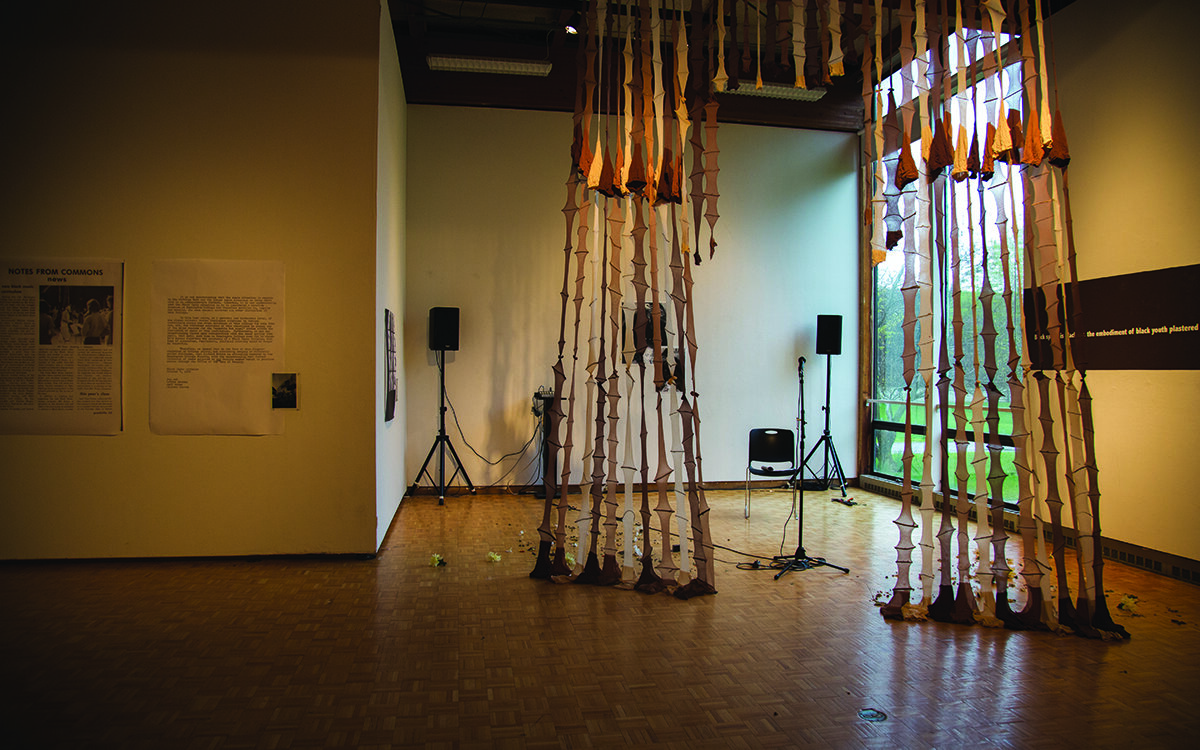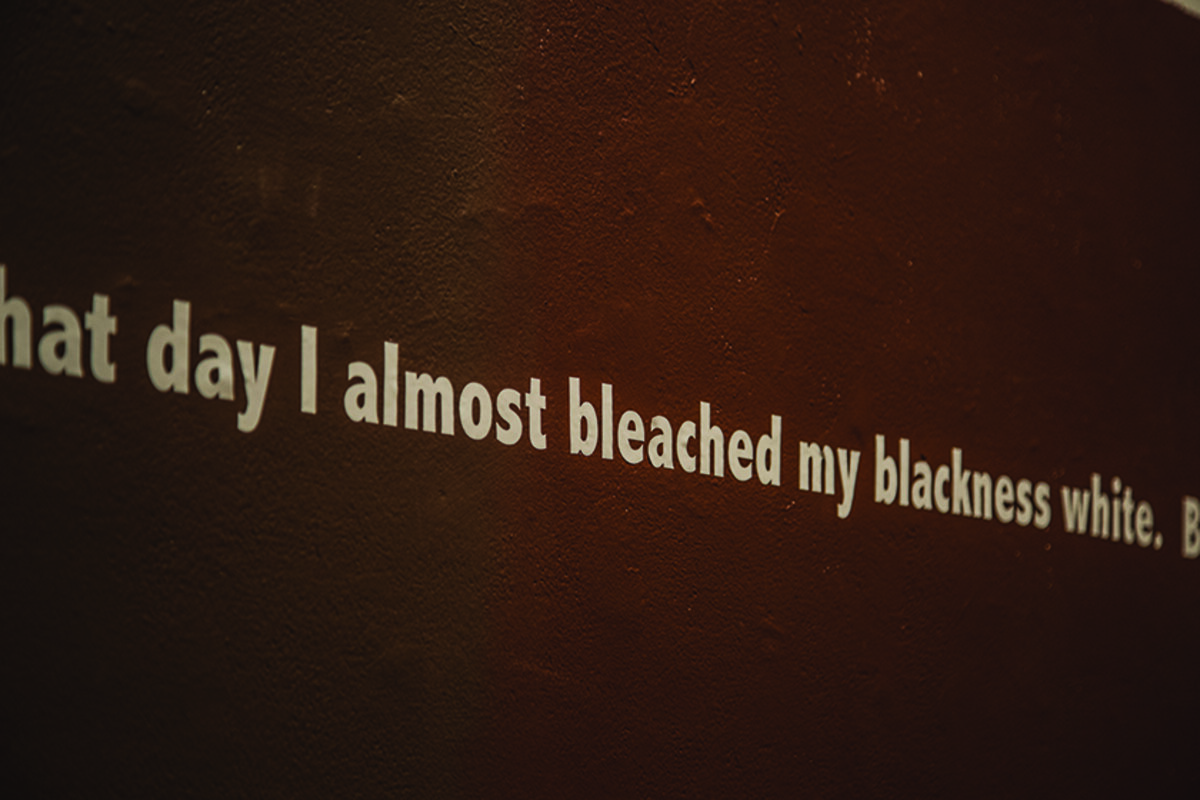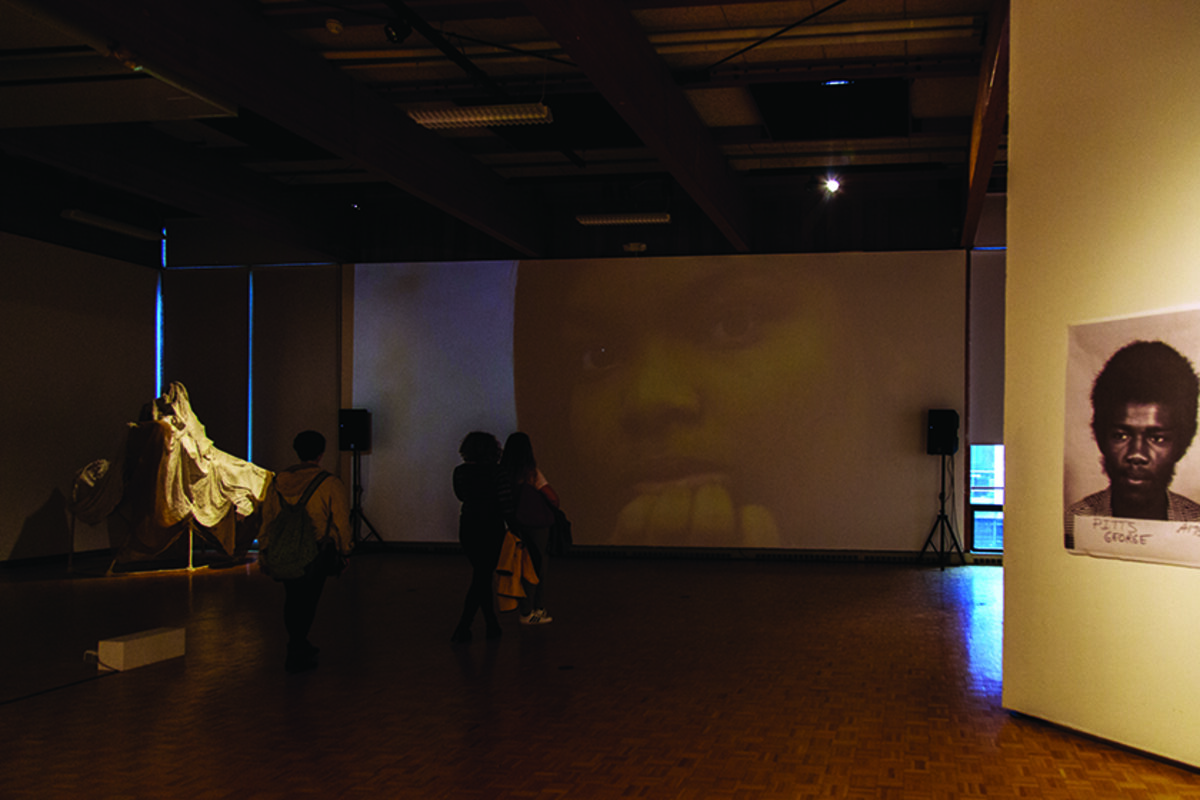Black Spring

Two classes, one big assignment: exhibit, catalogue, and archive black lives at Bennington in a multimedia performance exhibition in Usdan Gallery by Briee Della Rocca.
In the center of the Black Spring exhibition in Usdan Gallery at Bennington is a Bill Dixon room that faculty member Karthik Pandian calls “a cube-like gem.” Impossible to contain in the center gem is Dixon’s legendary improv recordings and journaling. Music faculty member Michael Wimberly tells me he recorded everything. There was no starting and stopping, he would record the full improv session and listen later, in retrospect, for the gold.
There is something of that approach in the way Pandian and Wimberly began the course taught this spring, given the same name as the exhibition itself, Black Spring. The collective class assignment was to develop an exhibition reflecting and documenting black lives at Bennington. The exhibition would evolve each week as students would add audio and visual pieces, as well as live performance and engagement elements staged each Tuesday in Usdan Gallery.
“It’s challenging to work on an exhibition with students. We had to give them latitude but also enough structure,” Pandian explains. The act of designing the exhibition, he says, is where improvisation meets structure. “From the beginning we knew this wasn’t going to be a show where we would install, install, install and be done. It had to feel like something was alive and growing and changing.”
So, Wimberly says, “We started in the space. The first minute of the first day began in Usdan Gallery. We came together to imagine what was possible and to let that moment guide us to ask open questions, not for the sake of specific answers” but as a way of looking at contemporary experiences and connecting those experiences to the past.
For the first few weeks, students in Pandian’s class were split up into groups, combing the archives for relevant texts, images, and sounds. Wimberly’s students were pulling from interviews and recordings, and drawing in sound from campus in response to prompts from Wimberly like “What does Bennington sound like? What does the dining hall sound like?” among others. For the remainder of the seven-week course, the groups were refined into a video team, a team responsible for a performative wall installation, another team dedicated to combing through the archives, and one that would organize the public/performance dimension.
And unlike traditional exhibition designs, for Black Spring sound design led the spatial configuration of the exhibition and mapped the gallery. In many ways that was a technical necessity, but, as Pandian notices, “It’s also symbolic. The Black Music Division was really out ahead of this at Bennington.”
Opening in April and closing in May, the vast, multimedia show called on the past with essays written by alumni like the late George Pitts ’73, who went on to lead Vibe’s and Life’s photography departments, as well as Adele Smith; through photography and sound/scores with pieces such as “Laughing in Blackness,” which collaged Maya Angelou’s “The Mask”, and Nina Simone’s “Work Song” with legendary black comedians Eddie Murphy and Dave Chappelle. It also wove present lives at Bennington with video installations, performances, and in direct engagement with students who came to the show or recorded their experiences in sectioned-off sound booth areas in the space. These were just some of the elements included in what Pandian calls, a modest project. “When you start with huge goals, when you face gigantic questions, we had to remind ourselves we were making an exhibition. That’s what our labor was going towards, that and making sure it has a life after it’s done.”
What will become of the show was the work of the second half of the course, which was split into two seven-week sections. The same group of students shifted their focus from staging and exhibiting to cataloguing, documenting, and disseminating the material and performances that emerged during the first seven weeks.
In the end, though, what did Pandian and Wimberly want their students to take away from the assignment? The same thing they wanted to provoke in the viewer: the question of what’s next. “The hope is that students will become the leaders of the next questions, that they are the next ones that come to the table.”

Black Spring Performances
- 4/11/2017 Jazmin Anderson & Ash Haywood opening reception
- 4/18/2017 Lulu Mulalu & Michael Wimberly
- 4/25/2017 Imani Lewis-Shirley, Andre James & Phillip Williams following Theaster Gates
- 5/02/2017 The Healing Collective & Kameryn Carter
- 5/09/2017 Deja Haley, Triston Walker & Jazmin Anderson



Black Studies
Black Studies: Black Spring I (Spring 2017)
Karthik Pandian
Students who have taken Black Studies courses in the Fall 2016 term will use this course to realize an exhibition in the Usdan Gallery based on their work and research into the past, present, and future of black lives at Bennington College. While the centerpiece of the exhibition will be the collaborative video produced in Black Studies: Black Video Division course, it will be contextualized by archival materials, props, costumes, and other artifacts from the shoot. This class will collaborate with Michael Wimberly’s Black Studies: Black Music Division on sound work for the installation.
Black Studies: Black Music Division (Spring 2017)
Michael Wimberly
Students will use this course to collaborate and realize an exhibition in the Usdan Gallery based on their work and research into the past, present, and future of black lives at Bennington College. While the centerpiece of the exhibition will be the collaborative video produced in Black Studies: Black Video Division course, it will be contextualized by archival materials and other artifacts, including sound bytes, original inspired songs, scores, and foley produced this spring term.
Black Studies: Black Spring II (Spring 2017)
Karthik Pandian
Students who have taken Black Studies courses in the Fall 2016 term will use this course to realize physical and digital documentation of their work and research into the past, present, and future of black lives at Bennington College. Participants in this practical course will archive and disseminate the work of Black Studies engaging technologies of print media, video, and web distribution.